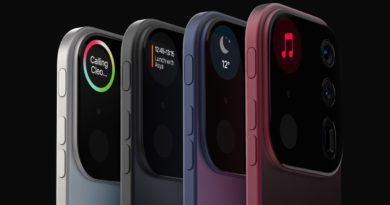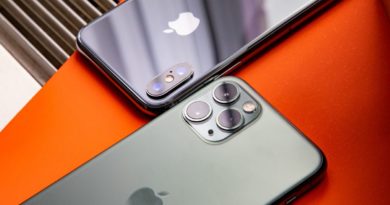iPhone vs. Android: Which is better for you?
![]()
While you can turn to a number of companies if you’re shopping for one of the best smartphones, no matter what you buy, it’s guaranteed to be running one of the two prominent mobile operating systems: iOS (if you pick an iPhone) or Android (if you opt for anything else).
Both platforms are quite mature at this stage, having existed for more than a decade. That means both have amassed comprehensive feature sets, and there’s very little one can do that the other cannot. Still, however, each has its advantages, and there are reasons you might want to choose one over the other.
Pitting iPhone vs. Android, we take a look at the respective strengths of each mobile platform, so you can pick the right one for you the next time you buy a smartphone.
iPhone vs Android: Why iPhone is better
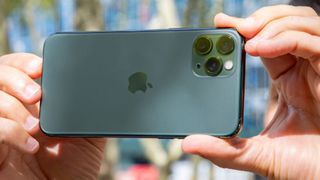
You’re invested in Apple’s ecosystem. This might seem like a shallow reason, but Apple obviously makes a wide breadth of tech products, and if you already own a Mac, iPad or Apple Watch, getting an iPhone makes a lot of sense.
Apple has designed a multitude of continuity features that allow you to carry over work and data from one of its devices to another, and these features can certainly save you time. Take Handoff, for example, where calls on your iPhone and web pages in Safari can move seamlessly between iOS and macOS. Universal Clipboard makes text copied on one platform usable on the other. Another one of our favorites is Continuity Camera, which allows you to take pictures and scan documents using your iPhone’s camera, and then view and edit them on your Mac. You can even complete purchases on your Mac by using biometric authentication features on your iPhone via Apple Pay.
Only a handful of Android phone makers have hardware ecosystems that approach Apple’s, and even for some that come close, like Samsung, you won’t get the depth of integration possible between the iPhone and other Apple-built devices. Microsoft is helping Google close the gap somewhat with its new Your Phone app for Windows, which allows Android users to respond to texts and notifications on their PCs, though the experience is a little clunky and there is still work to be done.
There are many other great examples of continuity across iOS, iPadOS, watchOS and macOS — and the iPhone is a critical component in that puzzle, especially now that iPhone apps can be seamlessly ported to macOS. Power users already immersed in Apple’s ecosystem can stand to gain a lot by adding an iPhone to their repertoire. And that’s to say nothing of friends and family members who prefer to use iMessage and FaceTime to keep in touch, especially these days during the pandemic.
The third-party apps are just better. This one is definitely down to personal preference, but as someone who has jumped back and forth between iOS and Android as long as both platforms have existed, I’ve been consistently blown away by the quality of apps built by iOS developers, and mostly disappointed in their Android counterparts.
Don’t get me wrong — there’s great software and developers on Android, but they’re harder to find, in my experience. My favorite Twitter app, Tweetbot 5, is an iOS exclusive, for example; by contrast, the best third-party Twitter app I’ve encountered on Android, Fenix 2, strongly pales in comparison. My colleague Henry T. Casey and I love using Bear to compose blog posts on our Macs and iPhones, but we’ve struggled to find a note-taking app on Android as comprehensive and slick.
You may even find that apps from established companies, ranging from banks to airlines, are a bit smoother and cleaner on iOS than Android, with better integration with the phone’s core services, like Wallet. (Google Pay is only now starting to catch on with many airlines.) And don’t even get me started on how slow and buggy Snapchat is on Android.
There’s a bigger selection of accessories. Walk into any Best Buy or Target, and you’ll find aisles of cases for every iPhone that Apple makes — something that certainly cannot be said for the Android contingent outside of flagship devices from the biggest companies. Once you get past the semi-healthy selection of products made for the latest Galaxy S device, you’re out of luck. Don’t bother expecting a choice of accessories for your new Pixel or LG handset at any brick-and-mortar retailer. Sure, you could go online and snag a $4 case off of Amazon, but then you’re guaranteed to get what you pay for.
The selection and availability of iPhone cases, screen protectors, car mounts and other goodies is simply far greater than you’ll find for any other phone, and that’s more important than most people realize. Recently, I used a Pixel 3 and then Pixel 4 as my daily driver. As someone who likes to regularly switch up my phone’s case to keep it feeling fresh, I’ve been extremely disappointed with the lack of options for Google’s handsets. iPhone owners will never have that problem.
- More: Keep your sensitive data protected with the best iPhone VPN
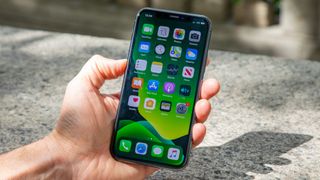
There’s no bloatware. No matter how you buy your iPhone, where you buy it from or what iPhone you buy, you won’t see any bloatware preinstalled when you boot it up for the first time. That means it’s clean from the very start, with no power- or data-siphoning apps you didn’t ask for sabotaging things behind the scenes.
That’s a relief if you’ve ever seen the way a new Android phone arrives out of the box — particularly one that you’ve bought through a carrier. Even spending $1,980 on a Galaxy Fold doesn’t spare AT&T customers from the affront of seeing software like CNN and DirecTV Now cluttering their app drawers. And it can be even worse if you buy a budget handset that has been heavily subsidized by a discount carrier.
Android buyers who purchase one of the best unlocked phones without a service agreement will have better luck avoiding bloatware. It also depends on the company. For example, unlocked Pixel phones aren’t mired down by any third-party apps; on the other hand, it’s not totally unheard of for some unlocked handsets to come with the odd unwelcome sponsored software.
You get quicker software updates. Android phones get fewer updates than iPhones, and when they do, they happen less frequently and are often delayed.
The number of updates an Android phone sees over the course of its lifetime depends largely on how expensive it is, what carrier you buy it from (or if it’s even purchased from a carrier at all) and what the phone maker’s software support policy is.
That’s a far cry from iPhones, which are supported with major software updates for many years, no matter what. Take the iPhone 6S, for example, which is on track to receive iOS 14 this fall, even though it originally launched with iOS 9 back in 2015. For comparison, consider Samsung’s Galaxy S6, which launched the same year and started with Android 5.0 Lollipop. Not only does it lack the latest Android software, but it stopped getting updates years ago. It only made it as far as 7.0 Nougat when Samsung pulled the plug on support — and when the S6 did get Nougat, it arrived in March 2017, eight months after Google unveiled the update.
What’s more, when a new iOS version is released, it is available to everyone on the same day, at the same time, and can be installed on all models that support it instantaneously. By contrast, Android releases are rolled out in waves to individual phones, not just by model. Last year, as many Pixel 4 owners were receiving Google’s December security patch, one of Tom’s Guide’s units was strangely left to languish on October software for unknown reasons.
It has better retail support. Let’s say something goes horribly wrong with your iPhone, and you need to get it serviced. Or perhaps you want a screen protector installed on it, and you’d rather have it handled by a professional, who will slap that film on with nary a bubble or speck of dust. Whatever your issue is, it’s nice to have a place to go — and what better place for iPhone users than the Apple Store.
Owners of Android phones don’t enjoy that luxury. If you need a new battery or a screen replacement and you didn’t purchase a protection plan from the retailer you bought it from, you’ll probably have to ship it back to the manufacturer. That’s quite a time-consuming hassle, given how much we all depend on our phones day in and day out.
iPhone vs Android: Why Android is better

There are phones at every price. The vast majority of the world’s smartphones run Android, and because so many companies build Android handsets, they’re available at every price range. There are cheap phones under the three-digit mark like the new Pixel 4a, as well as some of the best small phones and best big phones, and phablets and foldables far exceeding $1,000. No matter how much you can spend, chances are you can find an Android device that fits your budget or offers exclusive features.
The same cannot be said for iPhones, which historically have been expensive at launch, only to come down in price after successive generations. One of the most affordable Apple handsets is the iPhone 11, and that still costs $700. By contrast, the OnePlus 7T (which runs on Android) costs $100 less and has an OLED display, twice the RAM and internal storage, and a 2x telephoto lens. The least-expensive iPhone that Apple offers is the iPhone SE, which is a fantastic device with phenomenal performance for just $400, though its design is dated, and its screen will be too small for some.
It’s more customizable. Though both iOS and Android have evolved over the years, Android has always had a reputation for being the platform for users who like to tinker and personalize their devices. That starts with the home screen launcher, which offers dynamic widgets and the ability to place apps anywhere on a page or in a drawer, out of sight — something the iPhone is only catching up to now with iOS 14. You can even swap out your Android phone’s launcher with an alternative downloaded from the Google Play store.
Android also lets you download third-party replacements for core services — like web browsers, keyboards and media players — and set them as the default versions if you prefer a third-party app to one that was preinstalled on your phone. iOS has improved in this regard over the years, though the implementation is still somewhat clunky.
Finally, we have to talk about manufacturer skins — bespoke user interfaces and Android system software that are customized by certain phone makers, offering extra features and, often, the ability to create themes for your experience from top to bottom. Some Android fans prefer Google’s “stock” interpretation of Android. However, but lots of users like phone makers’ custom software, like Samsung’s One UI or OnePlus’ OxygenOS, because of their extra capabilities, such as the ability to take scrolling screenshots and hide photos and videos in password-protected folders.
You can (sometimes) expand the storage (or get a headphone jack, if you’re lucky). Although expandable storage is somewhat less popular these days, many Android phones still offer it. This allows you to use a microSD card to keep photos, apps and other media that won’t fit on your device’s internal memory.
That’s an amazing benefit, given the exorbitant prices that Apple and other phone makers charge to double or quadruple storage when you buy your handset. Why tack on another $100 to $150 to the price of a new phone just for an extra 128GB or 256GB of storage (that you’re not even sure you’ll need) when you can just drop $70 on a 512GB card later?
Additionally, while it’s certainly becoming more of a rarity on high-end phones these days, many Android devices still come with headphone jacks — a hotly requested feature Apple retired from its phones in 2016. That’s a big deal to people who still love to use their trusty old wired headphones.
- More: Up the security of your phone with the best Android VPN
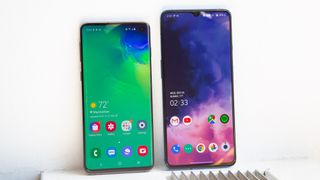
USB-C is universal. Android phones largely rely on USB-C ports for charging and data transfer these days, which is super convenient if you’re one of those people who really likes to pack light and carry only one cable. USB-C is also on many PCs these days, as well as on the Nintendo Switch. Personally, when I travel, I just take my 60-watt Chrome charger with me, and that powers my Pixel 4, MacBook Pro and Nintendo’s gaming console. It’s a beautiful thing.
Whereas Apple’s Lightning cable is a relic of the days when every tech company felt compelled to develop its own proprietary connector, USB-C represents the ideal single-port solution the industry is working toward. It also opens doors to faster charging technologies, like OnePlus’ Warp Charge 30T, which can get one of that company’s smartphones from completely dead to 70% capacity in just a half hour.
Compare that to the $699 iPhone 11, which ships with a sad 5-watt charger that takes ages to fully top up that phone’s battery. Apple does pack a faster 18-watt adapter in the box with the iPhone 11 Pro after years of making iPhone users buy their own fast charger, but the speed still pales in comparison to what you get in the quickest-charging Android handsets from Google, Samsung, OnePlus and Huawei. And future iPhones may not even come with a charger at all, according to rumors.
There’s an actual file system (with drag-and-drop support on PC). Most people don’t need to get their hands dirty with their smartphone’s file system. Still, it’s good to know that Android gives you that option, if you desire it. Even better, when you plug an Android handset into a Windows PC, you can very easily drag and drop files into folders, as if the device were just another drive.
That means your media libraries and documents are a snap to carry over and store locally, and you don’t have to subscribe to a monthly cloud service if you have an especially large library. iPhones obscure the file system from the user for everything except photos, which can be very frustrating for dealing with music, documents and other forms of media.
Some Android phones, like the new Galaxy Note 20, even have special PC or display projection features, that let you use view and use your device in a desktop capacity. Samsung’s DeX interface is one such example of this. With such versatility, a high-end Android phone could legitimately function as a replacement for one of the best Chromebooks or similarly ultraportable laptops.
Innovative features usually land on Android phones first. Sure, Apple’s coffers are pretty stacked. However, it is just one company, with one philosophy. As a result, iOS can be slow — or at least slower than the Android community — to adapt to emerging technologies.
With so many companies building Android phones, it’s little surprise that Android partners tend to beat Apple to the market with innovations in the mobile space. Wireless charging, fast charging, NFC, 4G LTE, 5G, OLED displays, in-screen fingerprint sensors, water resistance and multilens cameras all landed on Android devices before iPhones, as well as software breakthroughs like true multitasking, copy and paste and multiwindow support.
Of course, this isn’t to say Apple hasn’t delivered breakthroughs of its own. The iPhone 5s wasn’t the first phone with a capacitive fingerprint sensor, but it was the first with one that worked reliably and securely, and the same can be said for the iPhone X and facial identification. However, far more Android phones are released from a variety of vendors every year, so it’s just a matter of scale that hardware running Google’s platform is swifter to adapt.
Bottom line

So then, iPhone or Android: Which should you choose? Both platforms have pros and cons, and, as with many purchase decisions, your choice will depend on what you value most.
Owning an iPhone is a simpler, more convenient experience. There’s less to think about, and because Apple’s iPhone represents the single most popular brand of smartphone, there’s an abundance of support everywhere you go — whether you need your battery replaced or you’re just trying to pick up a new case. That’s especially true in the United States, where iPhones accounted for 39% of all smartphones sold in the third quarter of 2019 — the largest share of any manufacturer — according to Counterpoint.
Android-device ownership is a bit harder in those respects. Yet it’s simultaneously more freeing, because it offers more choice — choice of how much you want to spend, choice of hardware and software features, and choice in how you organize and personalize your experience. If you’re extremely particular about the technology you use, you might find Android more liberating — dare I say, fun — though you’ll also likely lament the relative lack of high-quality apps and accessories.
If you’re wondering which particular device you should switch to, there’s no better place to start than our lists of the best iPhones and best Android phones. Whichever device you pick, just make sure it fits with your operating system preferences.
